What is gouty nephropathy
The term gouty nephropathy is understood as a group of diseases of the excretory system associated with the accumulation in the body of the breakdown products of purine compounds. The course of the pathology is accompanied by the appearance of metabolic and vascular disorders characteristic of gout. This disease is found in 1 out of 100 people, mostly men are affected. Nephropathy develops in 30-50% of patients.
With a persistent increase in the level of uric acid, the risk of impaired renal function increases several times. Every fourth patient is diagnosed with severe chronic renal failure.
The mechanism of the development of the disease
The occurrence of nephropathy is facilitated by the formation of an excess amount of uric acid, characteristic of gout, as well as a violation of the processes of excretion of its salts - urates. Hypersecretion of the substance is due to a lack of hypoxanthine-guanine phosphoribosyltransferase, the exchange of which is responsible for the genes located on the X chromosome. This explains the susceptibility of men to such a disease as gout. The complete absence of this enzyme leads to the development of the Lesch-Nyhan syndrome.

Signs of metabolic disorders appear at an early age, gout in such people is characterized by an extremely severe course. The deposition of urates in the body can be facilitated by an ATP defect.
In patients with idiopathic gout, a violation of the main functions of the excretory system is revealed - an increase in some phases of reabsorption and a decrease in the glomerular filtration rate.
An important role in the occurrence of gouty nephropathy is played by a defect in tubular acidogenesis, due to which crystallization of uric acid salts occurs. It is with this that the increase in the acidity of urine with gout is associated. Hyperuricosuria contributes to the formation of stones and the development of a persistent inflammatory process.
Clinical picture of the disease
Gouty nephropathy develops against the background of a long course of specific arthritis. Most often this disease occurs in people suffering from:
- abdominal obesity;
- arterial hypertension;
- hypersecretion of insulin.
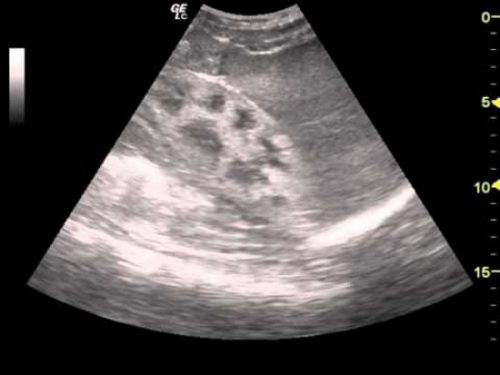
Urate nephrolithiasis is most often bilateral. Stones are not detected on x-ray, so ultrasound is used to diagnose the disease. During the period of remission, changes in the composition of urine are not observed. With renal colic, the appearance of bloody inclusions and the release of calculi with urine are possible. A long period of exacerbation contributes to the development of pyelonephritis and postrenal renal failure.
Chronic tubulo-interstitial inflammation is characterized by a change in the composition of urine, combined with symptoms of arterial hypertension. The appearance of protein in urine is accompanied by mild hematuria. Stones in the urine are usually not detected, but there is an alternation of polyuria with oliguria. Quite often bilateral cystic defeat comes to light. Arterial hypertension is amenable to drug control. If standard hypertensive drugs are ineffective, we are talking about the development of glomerulosclerosis - a narrowing of the renal artery.
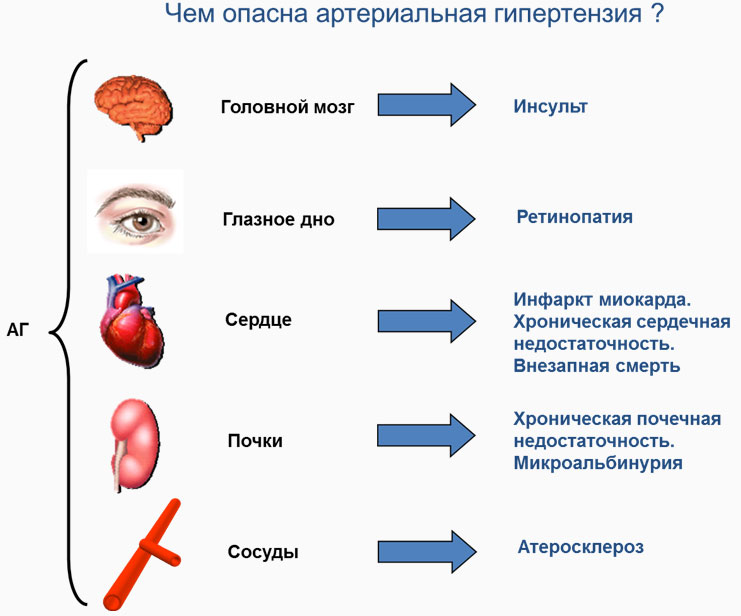
Kidney damage in gout has an acute onset. Its main symptoms are:
- urinary retention;
- pain in the lower abdomen and lumbar region.
An attack of renal colic often occurs against the background of an exacerbation of gouty arthritis. Brown urine is excreted in small quantities. Kidney functions are preserved. The excretion of sodium in the urine is not disturbed. Subsequently, oliguria turns into a complete absence of urination.
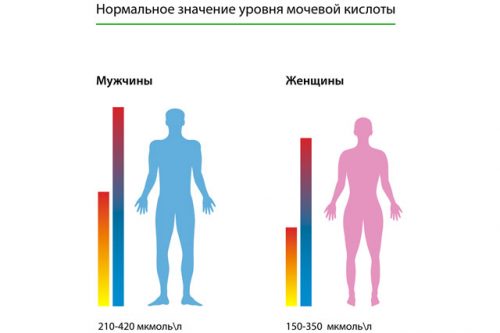
Gouty nephropathy is diagnosed using laboratory and instrumental methods. A complete blood count reflects an increase in the level of uric acid. Crystalline salts are found in the synovial fluid. When making a final diagnosis, it is necessary to exclude other diseases characterized by the development of hyperuricosuria:
- chronic alcoholism;
- sarcoidosis;
- heavy metal poisoning;
- psoriasis;
- hypothyroidism;
- polycystic kidney disease;
- malignant tumors.
 An increase in the level of uric acid in the body can occur while taking certain medications:
An increase in the level of uric acid in the body can occur while taking certain medications:
- NSAIDs;
- nicotinic acid;
- antibiotics;
- cytostatics;
- salicylates.
Ways to treat the disease
Gouty kidney disease is a life-threatening pathological condition. Treatment is carried out according to the schemes used in other forms of acute renal failure.
Surgical interventions are performed in the presence of stones that block the ureters.
Further therapy involves the infusion of a large amount of fluid in combination with diuretics. This helps to cleanse the body of uric acid and its salts. It is necessary to use alkaline solutions that promote the dissolution of urates. If no improvement is observed within 3 days, urgent dialysis is indicated.
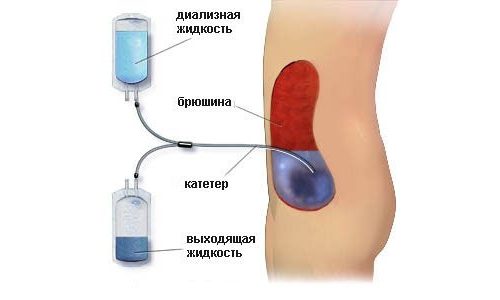
Treatment of chronic gouty nephropathy is aimed at normalizing the metabolism of uric acid. For this, a special diet and a plentiful alkaline drink are prescribed. From the diet it is necessary to exclude foods rich in purines:
- beef;
- fish;
- sweet products;
- alcohol.
Allopurinol is the mainstay of medical treatment for gout and its complications. It prevents the formation of uric acid and dissolves crystalline salts. To stimulate the excretion of these substances from the body, uricosuric drugs are used. Perhaps the combined use of funds of several pharmacological groups.
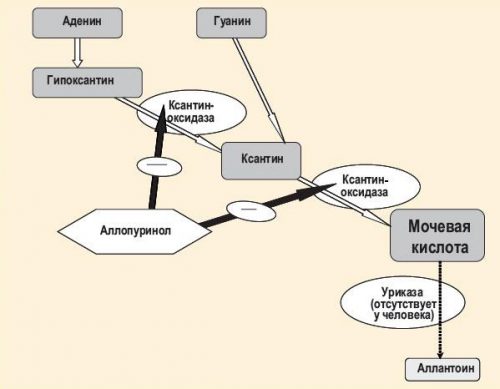
Standard antihypertensive drugs are used to lower blood pressure. Many of them have nephroprotective properties, their intake prevents the development of acute renal failure. If a chronic inflammatory process is detected, antibiotic therapy is performed. Timely elimination of pyelonephritis prevents the transition of renal failure to the terminal stage. Acute nephropathy with timely initiation of treatment has a favorable prognosis.
In chronic forms, renal failure develops 10 to 12 years after the onset of the disease. One in four patients end up needing dialysis.
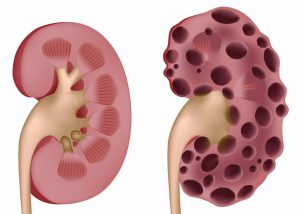 Uraite nephrolithiasis and chronic nephritis develop against the background of a long course of tofus gout with frequent periods of exacerbation. In some cases, nephropathy is the first sign of gout against the background of an atypical form of arthritis for this disease (inflammation of large joints, damage to the entire musculoskeletal system, severe pain).
Uraite nephrolithiasis and chronic nephritis develop against the background of a long course of tofus gout with frequent periods of exacerbation. In some cases, nephropathy is the first sign of gout against the background of an atypical form of arthritis for this disease (inflammation of large joints, damage to the entire musculoskeletal system, severe pain).
Urate nephrolithiasis is characterized by a relapsing course, each exacerbation contributes to the emergence of a new episode of acute renal failure.
The changes that occur in the body against the background of acute nephropathy are reversible. The disease has a cyclic course, characteristic of all forms of acute renal failure caused by tubular occlusion. Chronic tubulo - interstitial inflammatory process can occur in a latent or subclinical form.
The risk of developing severe renal failure in gouty nephropathy increases with the frequent occurrence of hypertensive crises, persistent proteinuria, the addition of a bacterial infection, and the patient's advanced age.




